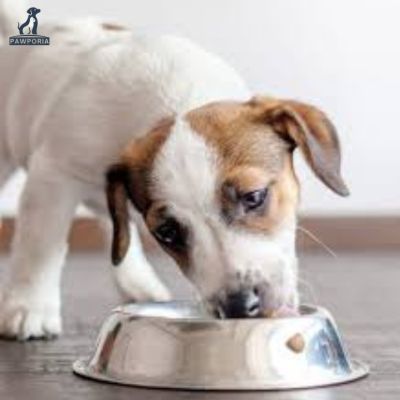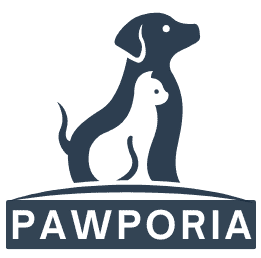All of us who have ever had a slow-cooked pot roast know how tender and delicious it is. Just like us, our dogs deserve soft, delicious, and nutritious food. Low-temperature cooking of dog food is not just a trend, it is a healthier way to prepare food for your dog. The process retains almost all the nutrients of the food ingredients, makes the food easy to digest, and tastes amazing.
I first tried this method when my dog started ignoring the food I bought for him from the market. After doing various research I found out that high temperature processing destroys the nutrients in commercial dog food. So I started experimenting with dog food cooked at low temperature and the difference was incredible. My dog’s coat became shinier, his appetite improved and he started eating all his food with great interest again.
If you, like me, want to give your dog the best food and the best nutrition without any hassle, then keep reading this article. In this article, I will discuss how to cook food for dogs at low temperatures in the right way. I will discuss all the pros and cons of this method, along with a couple of sample recipes.
Why Cook Dog Food at Low Temperature?
1. Preserves Nutrients
Cooking food, whether for dogs or humans, at high temperatures destroys many of the nutrients in the food because high temperatures break down the vitamins and proteins present in the food. Cooking at a lower temperature of around 165 degrees Fahrenheit or 74 degrees Celsius makes the food more suitable and beneficial for your dog.
2. Easier on the Stomach
Dogs with sensitive stomachs or those with allergies to various foods often benefit from eating bland foods cooked at low temperatures. Slow cooking breaks down the fiber and fat in the food without destroying it, making it easier to digest.
3. Better Flavor & Texture

Cooking at a very low temperature takes a little longer and we have all seen how juicy and tasty meat is cooked this way. Dogs also love it. Cooking at a low temperature keeps the moisture in the food, making it more delicious and appealing. This method is especially good for those who don’t want to eat.
4. Reduces Harmful Byproducts
If any food is cooked at high temperatures, various harmful substances such as acrylamide can be formed in it. Acrylamide is found in such foods or such harmful substances, especially in burnt foods. Cooking at low temperatures reduces the possibility of producing such harmful substances. Which keeps your dog food safe.
How to Cook Dog Food at Low Temperature
To prepare delicious food at low temperatures, you don’t need expensive or fancy equipment. You just need a slow cooker, a simple oven or a sous vide machine. Here’s how to use them safely and effectively.
1. Choose the Right Ingredients
Choose the right ingredients for Hello Cooking.
For protein, choose chicken, turkey, beef, or boneless, skinless fish. Vegetables. Vegetables that you can use in this method include green beans, etc.
- Proteins: choose chicken, turkey, beef, or boneless, skinless fish.
- Veggies: Carrots, peas, sweet potatoes, green beans are the vegetables that you can use in this method.
- Healthy Fats: Coconut oil, fish oil, flaxseed oil
- Grains (optional): Brown rice, quinoa, oats
Avoid: Onions, garlic, grapes, raisins, chocolate, and excessive salt.
2. Cooking Methods
- Slow Cooker: Cook your dog food in a slow cooker on low heat for six to eight hours. This method is best for busy pet parents. You can get a few hours of your time done by cooking your dog.
- Oven: This can be cooked in the oven at 250 degrees Fahrenheit or 120 degrees Celsius for two to three hours.
- Sous Vide: You can prepare this pond food in a vacuum at 145 degrees Fahrenheit or 63 degrees Celsius for four to six hours.
This last method provides the best food in terms of nutritional value.
3. Storage Tips
- Fridge: Store cooked food in an airtight container in the refrigerator for three to five days.
- Freezer: If you make a large quantity of food at once, you can store it in the freezer for a long time. Divide the food into portions for serving and store in the same container for up to three months
3 Easy Low-Temperature Dog Food Recipes
1. Slow-Cooked Chicken & Veggie Stew
Preparation Time: 15 mins
Cooking Time: 6 hours
Calories: ~300 per cup
Cuisine: Homemade (USA-inspired)
Keywords: dog food cooked at low temperature, homemade dog food, healthy dog recipes
Ingredients:
- 2 lbs boneless chicken thighs
- 1 cup chopped carrots
- 1 cup green beans
- ½ cup peas
- 1 tbsp coconut oil
- 2 cups low-sodium chicken broth
Instructions:
- Place all ingredients in a slow cooker.
- Cook on low for 6 hours.
- Shred chicken, mix well, and let cool before serving.
Nutritional Benefits:
- High in protein for muscle health
- Rich in fiber for digestion
- Contains healthy fats for a shiny coat
Fun Fact: Dogs have only 1,700 taste buds (humans have 9,000), so strong flavors aren’t necessary!
Pro Tip: Freeze leftovers in silicone molds for easy portioning.
2. Beef & Sweet Potato Bake
Preparation Time: 20 mins
Cooking Time: 3 hours
Calories: ~350 per cup
Cuisine: Homemade
Ingredients:
- 1 lb lean ground beef
- 1 large sweet potato, diced
- ½ cup chopped spinach
- 1 tbsp olive oil
Instructions:
- Preheat oven to 250°F (120°C).
- Mix all ingredients in a baking dish.
- Cover with foil and bake for 3 hours.
- Let cool, then serve.
Why It’s Great:
- Lean beef provides iron and B vitamins.
- Sweet potatoes are rich in beta-carotene.
3. Sous Vide Salmon & Quinoa
Preparation Time: 10 mins
Cooking Time: 4 hours
Calories: ~320 per cup
Ingredients:
- 1 lb salmon fillet (skinless)
- ½ cup cooked quinoa
- ½ cup steamed zucchini
- 1 tsp fish oil
Instructions:
- Set sous vide to 145°F (63°C).
- Seal salmon in a bag and cook for 4 hours.
- Flake salmon, mix with quinoa and zucchini, then drizzle with fish oil.
Benefits:
- Omega-3 fatty acids for brain health.
- Quinoa adds plant-based protein.
Common Mistakes to Avoid
Keep the following points in mind when preparing high-quality dog food at low temperatures:
- Overcooking: When cooking for dogs at low temperatures, allow as much time as necessary. Overcooking can often dry out the food, compromising its quality.
- Unbalanced Meals: No matter what temperature or condition you cook at, make sure the ingredients are always right. Proteins, vegetables, healthy fats, all in the right proportions in your dog’s food.
- Skipping Vet Advice: If you are feeding your dog raw food or normal cooked food, don’t change it suddenly. Before shifting to low temperature cooking, consult your veterinarian. The veterinarian will give you the right advice based on your dog’s health and condition.
Final Thoughts
Preparing dog food at home at low temperatures is the easiest and most effective way to improve your dog’s health. As easy as you might think, it is actually easier and more convenient to do. Most importantly, cooking for dogs at low temperatures brings various benefits to your pooch, such as better digestion, brighter poo, and a renewed appetite. Start with one of the recipes in this article and see how your dog reacts to it. Keep an eye on him. If he reacts well to everything and doesn’t show any unusual symptoms, then it is a good decision for you and your dog.
FAQs
Is low-temperature dog food safer than raw food?
Yes, food cooked at low temperatures is safer than raw food because raw food can have various types of bacteria such as salmonella. Food cooked at low temperatures does not contain these bacteria but its nutritional value remains intact.
Can I use a regular pot on the stove?
Yes, you can use regular pots on the stove, but make sure to cook the food thoroughly but do not overcook it.
How much should I feed my dog?
The amount of food a dog should eat depends on the dog’s activity level and body weight. For every 20 pounds of body-weight of a dog, about ½ to 1 cup of food can be fed.
Can I add spices during low-temperature cooking?
You can add some spices like turmeric or parsley in small amounts, but avoid salt, onion, or garlic in dog food completely.
Will this save money compared to commercial dog food?
The total cost of cooking at home at low temperatures is much lower than buying food from outside. If you adopt this habit, you can save a lot of dollars at the end of the year.

